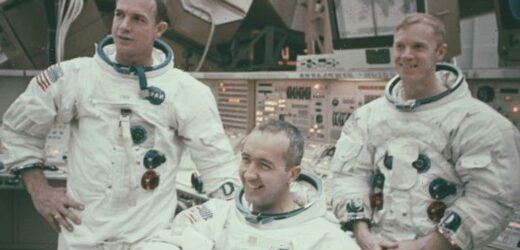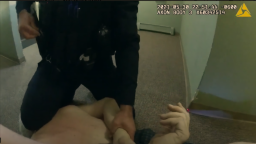Blue Origin: Jeff Bezos launches into space on New Shepard rocket
We use your sign-up to provide content in ways you’ve consented to and to improve our understanding of you. This may include adverts from us and 3rd parties based on our understanding. You can unsubscribe at any time. More info
In 1965, Jim McDivitt, now 92, embarked upon a space mission that he would never forget. McDivitt and his crewmate, Edward White, set off on NASA’s second manned mission to space, dubbed Gemini IV, in early June.
But, as they launched from the Cape Kennedy Air Force Station in Florida, neither man could have possibly imagined what McDivitt would see.
Upon returning to Earth, the NASA astronaut, then aged 35, spotted a white cigar-shaped UFO whilst in space.
And over a decade later, he was still none the wiser about what he had actually seen.
Speaking on US television in 1975, he recalled: “At the time I saw it, I said there was something out in front of me or outside the spacecraft that I couldn’t identify and I never have been able to identify it, and I don’t think anybody ever will.

“It was rotating around, I noticed something out in front that was white cylindrical shape with a white pole sticking it out of one corner of it out of one corner of it.
“It looked like a beer can with a smooth pencil sticking out.”
The astronaut, who also commanded NASA’s Apollo 9 mission, grabbed his camera to take photos of the object.
“As the sun shone on the window, I could no longer see out and the thing just disappeared,” he added.

McDivitt’s photos were not in focus.
He also said that North American Aerospace Defense Command records did not show anything on their radars.
Experts speculate there is a much simpler explanation – the UFO was likely orbital debris from the Gemini 4 launch.
Former space engineer James Oberg said the Gemini 4 case cannot be closed.

But he speculates Mr McDivitt might have seen a part of NASA’s Titan 11 rocket.
He wrote on his blog: “McDivitt, more than a decade after the fact, refused to believe he could have misidentified that object – but both his degraded eyesight and different viewing angle at the time of the sighting eliminate any reliability from that claim – and years of UFO research have taught us the surprising lesson that pilots are, in truth, among the poorest observers of UFOs because of their instinctive pattern of perceiving visual stimuli primarily in terms of threats to their own vehicles.
Source: Read Full Article


